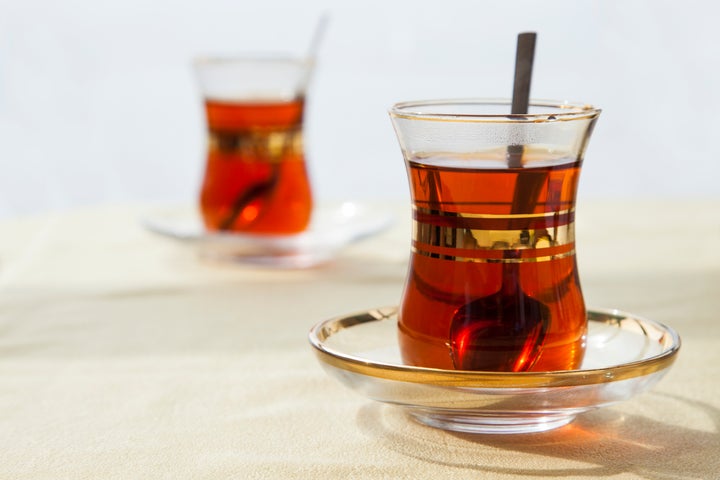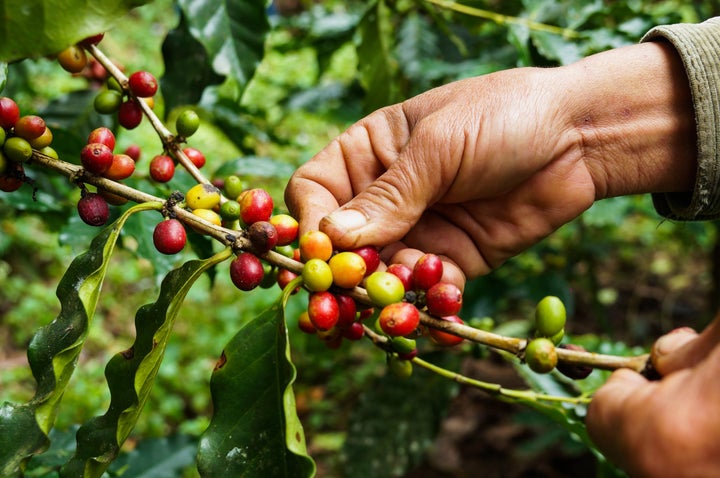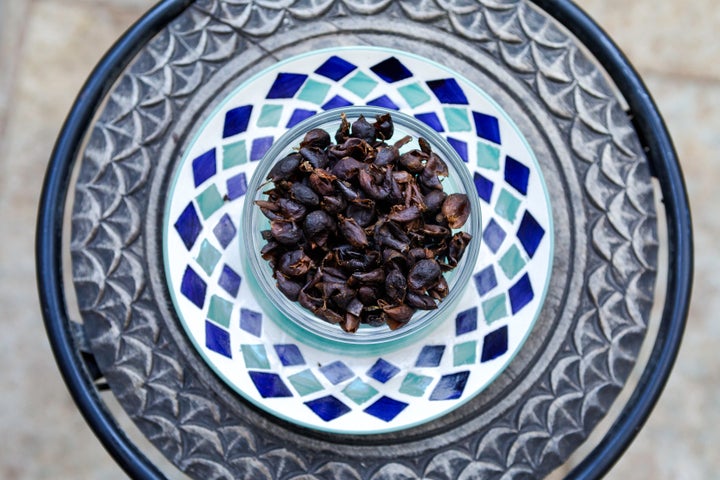
If recent caffeine-related trends are of any indication (Proffee! Japanese iced coffee! Caffeinated gummy bears!), one thing is certain: Americans love their caffeine any which way they can get it—which is why we’re excited to introduce you to a slightly different form of java called coffee cherry tea.
Also known as cascara, which means “husk” in Spanish, the product is made from the dried skins of the coffee fruit and it is predominantly consumed in coffee-growing nations like Bolivia, Ethiopia and Yemen, among others. The concoction has, however, garnered a following throughout the United States in the past few years, as destinations like Starbucks, Blue Bottle Coffee and Shake Shack have all introduced seasonal cascara-based drinks on their menus at one point in time.
To be clear: The coffee cherry tea we’re talking about is not made from cascara sagrada, which is actually a dietary supplement that is sometimes consumed as a tea. The latter product is associated with a slew of negative side effects, none of which are shared with the type of cascara we’re talking about.
Below, find just about everything you need to know about coffee cherry tea, from what it is to the proper way to drink it and, of course, how it measures up against more traditional coffees and teas.
What exactly is cascara?
Let’s start from the top: You might not know that a coffee bean is actually the seed inside a coffee cherry. Normally red but sometimes yellow and orange in shade, a coffee cherry usually houses two seeds, which we refer to as coffee beans. “The two beans side by side at the core of the coffee cherry are covered in a layer of slimy mucilage, which is protected by the outer skin,” explained Tom Saxon, the founder and head of coffee at Batch Coffee. That outer skin is what cascara is made of.


Although the peeled husk is often turned into compost, many farmers also collect it, dry it in the sun and package it into cascara, which, according to coffee specialist Jen Stone, takes several months to mature and looks dark red when ready.
So … is it coffee? Tea? Or something entirely different?
This drink doesn’t easily fall within a category that most people are familiar with. Overall, the consensus seems to be that cascara is a fruit tisane — basically, a fruit herbal tea.
What does it taste like?
You’re going to want to think of it as a very potent, fruity, herbal tea boasting notes of hibiscus, cherry and even mango. Altogether pretty balanced in taste, it does, however, offer notes of sharp acidity once ingested — it comes from coffee beans, after all.
“In a sense, it tastes a lot more like the natural coffee cherry than coffee itself does,” explains Asser Christensen, a licensed Q (quality) grader and coffee expert. “The bean undergoes a long process before it is roasted and consumed whereas cascara is a lot closer to coffee as found in nature.” Just like regular java, the taste of coffee cherry tea is also heavily influenced by where it is grown and how it’s handled and dried.
The million-dollar question: How much caffeine does a cup of cascara yield?
As evidenced by a study carried out by Square Mile Coffee Roasters, the caffeine content of a cup of cascara is roughly a fifth of that of a regular cup of coffee. “Even at the strongest, longest brew, the caffeine content of cascara came in at 111.4 mg/liter, compared to the broad range of about 400-800 mg/liter in brewed coffee,” reads the study.
Which is to say, you can technically consume more of it compared to regular coffee, without having to worry about having too much caffeine. That brings us to ...
Are there any negative side effects to consuming cascara?
“Since cascara is sun-dried and often under crude conditions, mold and toxins can be concerns,” Christensen explained. In addition to that, both Saxon and Stone mention that, especially if they are sensitive to caffeine, consumers should be careful about the amount of cascara they drink.
But those all seem to be minor potential drawbacks compared to the fact that it is actually illegal to sell cascara anywhere within the European Union, except for Switzerland. That ban is contingent on a 1997 law that states that any “novel” food (an adjective that refers to any type of consumable product that was not widely consumed within the EU prior to the law going into effect) must be proven safe before it can be sold.
Back in 2015, a green coffee importer based in Austria called Panama Varietal began working on a cascara-based soft drink alongside an application to actually sell it. Following concerns about potential illnesses seen in animals consuming cascara, the application was never approved and the company began working on a different cascara-adjacent product. A revised application made its way to the European Food Safety Authority about a year ago and is expected to pass before the end of the year — which will likely put any discussion about the negative impact of drinking the tisane to rest.
On the other side of the Atlantic, cascara isn’t regulated. No legal entity within the United States has yet bothered to look into the product as closely as Europeans have, which is why American folks have been treated to sporadic cascara-based drinks developed by chains the likes of Starbucks.
Well, what are the benefits of drinking cascara, then?
Cascara boasts a whole lot of antioxidants, mostly polyphenols. According to a scientific study published in Oxidative Medicine and Cellular Longevity, “long term consumption of diets rich in plant polyphenols offer protection against development of cancers, cardiovascular diseases, diabetes, osteoporosis and neurodegenerative diseases.” Clearly, having a single cup of cascara is not going to turn you into the healthiest human out there, but consuming the beverage regularly over years can be beneficial in the grand scheme of things.
Other pros include the very specific and unique flavor profile, which many coffee and tea drinkers seek when searching for the next great brew, its health benefits when compared to energy drinks (which some people claim boast similar profiles) and its global sustainable impact.
“Cascara has been traditionally discarded by farmers for compost or dumped in waterways after a collection process called strip picking, when coffee cherries — ripe, overripe and underripe — are taken off all at once,” Stone explained. “While some farms own equipment to selectively pick — meaning only taking the cherries that are ready to go — it can be pricey.” As a result, being able to use the usually discarded parts of the cherry will undoubtedly positively affect our environment.
How do I prepare and serve a cup of cascara?
The drink can be served hot or cold. Saxon offered two pretty straightforward recipes. If preparing it hot, you’re going to need about three tablespoons of dried cascara for each 10-ounce cup. Place the husks in a tea strainer or a French press, boil 10 ounces of water and pour the husks and hot water right into your chosen brewing method. Let the cascara steep for five minutes and then strain it or press it before pouring into your cup.
If you want to make it cold, you’re going to need five tablespoons of the husks for every 10-ounce cup. The initial step is identical to the process mentioned above: place the cascara in a tea strainer or a French press. You’re then going to pour 10 ounces of cold water on top of the husk, let it steep overnight, strain/press it, pour it into a jug and refrigerate the concoction for a couple of hours. Feel free to add some ice to it before taking it down!
Where can I buy cascara and how much is it going to cost?
Although cascara-based drinks have been sporadically seen on the menus of established coffee businesses around the United States, they’re not too easy to find. Your best bet would be to look for it online. On Amazon, for example, you can grab a 4-ounce pack of cascara for around $7. Verve Coffee also sells bags of 90 grams for $15 while Tico Roasters asks the same price for 113 grams.
One final piece of advice: Just like with anything these days, do your research before purchasing cascara to make sure you’re getting the best bang for your buck.